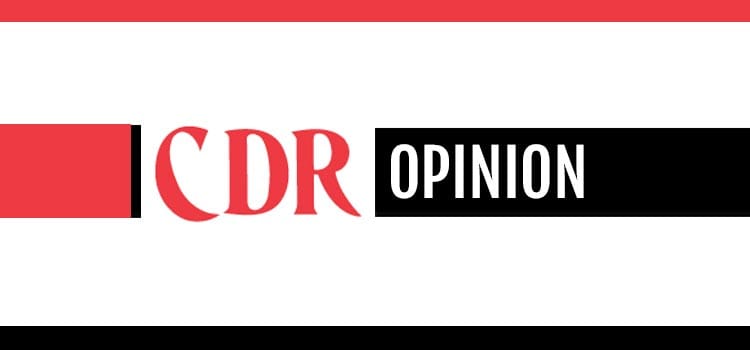With massive change in the retail pharmacy industry — including mergers and acquisitions, downward pressure on reimbursement rates, consolidation of payers, and a nascent movement to transform pharmacists into providers — now is a good time to take a step back and look at the big picture. What forces will transform the industry, and which strategies will succeed in the face of those forces?

At A.T. Kearney, several of our pharmacy-focused clients have asked for our perspectives not only about what the community pharmacy will look like in the future, but also how it will get there. This article summarizes our outlook.
Four forces will shape material and structural change in the industry. We believe that these forces, combined with the digital transformation of retail and health care, will affect the industry in ways that are difficult to fully comprehend today.
Let’s take a closer look at the four major forces driving change in the industry:
• Costs. It is and will continue to be all about costs, which puts the economic buyer — the payer — at the point of maximum influence. In the United States, efforts to bend the health care cost curve will lead to greater cost transparency, explorations of alternative payment methods, and a squeezing of all participants along the health care value chain. In pursuit of ruthless efficiency, affordable care models will be an enormous strategic advantage.
• Scale. Although not the only weapon in this battle, scale is important. It can wring out inefficiencies across the value chain — from manufacturing, distribution and retailing to providing care and managing benefits. Furthermore, the current phase of consolidation is self-reinforcing as the increasing size of competitors, suppliers and customers creates pressure to grow or get sidelined.

• Consumer-centricity. Creating a positive experience for consumers — the most valuable asset — is replacing asset-centricity and enables new operating models and entrants to meet their needs. Historically, convenient store locations brought success, and mail order fulfillment was a holy grail. But going forward, more costs and control will be pushed to consumers. As they search for efficiency, they will reward companies that offer control and digital solutions to affordably and swiftly serve their health care needs.
• Choice. Consumers will sacrifice choice in return for lower costs, more convenient service and better outcomes. Although they will value differentiation, they will place more value on lower costs and superior outcomes and will accept restricted and narrow networks if those networks offer material cost advantages.
With these forces in play, big strategic actions will be part of the mix as pharmacy retailers look to the future. Competitors are consolidating and collaborating horizontally, vertically and globally. They’re seeking scale and digital enablement to blur traditionally siloed roles. However, any strategic action should support a broad vision.
Forward-thinking pharmacy retailers may find four visionary strategies attractive:
• Pursue a large captive audience. To own their customers’ health care lives and lock in as many patients as possible, pharmacies can look up and down the value chain. Although taking different approaches, CVS Health and Walgreens have been following this strategy in their deals with pharmacy benefits managers. The consolidation of national payers also provides opportunities to redefine payer relationships. Pharmacies can then use those redefined relationships to gain access to customers and operational efficiencies that will provide a strategic advantage.
• Dominate customer access channels. Where the captive-audience model uses alliances with other value-chain players to attract customers, the access model uses more locations to attract alliances and consumers. By dramatically expanding the points of care under its control, a retailer becomes the customers’ partner of choice — too big to be ignored by PBMs and payers. CVS has pursued this strategy with Target Corp., and Walgreens is attempting it with Rite Aid Corp. We expect this to continue with smaller players such as mid-tier grocers and independent pharmacies. Deals may take the form of acquisition, store-within-a-store concepts, partnerships or franchise models. In addition to a range of retailers, wholesalers may have a role to play in this strategy.
• Release the disruptors. Given the industry’s pace of change, tomorrow’s leaders could well be the companies that move first on powerful disruptions. Thus, a retail pharmacy could make a bold move, such as changing its PBM pricing structure to a fee-for-service or outcome model. It could transform drug acquisition and supply chain models, or it could launch a mega-restricted network with a traditional rival, as airlines have done somewhat with their linked networks, to create scale and move volume. Or it could incubate and accelerate disruptions — for example, by providing Amazon.com Inc. with prescription fulfillment capabilities.
• Compete on price. A large, multifaceted retailer with a large front-of-store basket could use its pharmacy as a loss leader, with its other products subsidizing aggressively low prices on prescription drugs — providing a compelling business case to payers and increased door turns and dwell time for consumers. Gaining volume, it would also gain collateral reputational benefits among consumers who see it combating unsustainable health care costs. Meanwhile, it would be setting market rates that would threaten pure-play retailers, which earn a larger percentage of their revenues from the pharmacy itself with heavier brick-and-mortar costs.
As we discuss these perspectives with our clients, we point out that every company’s situation is different. The two primary strategic dilemmas are where to play and how to win. In fact, the dilemmas are intertwined: Focus your actions on areas where you are convinced you know how to win.
Each company has unique strengths, and the challenge of strategy is knowing how to capitalize most effectively on those strengths in a challenging and ever-changing industry environment.
Todd Huseby (todd.huseby@atkearney.com) focuses on retail and health care clients as a partner with the global management consulting firm A.T. Kearney. Bob O’Meara (bob.omeara@atkearney.com) is a partner with A.T. Kearney in the retail and operations practices. Both are based in Chicago.









